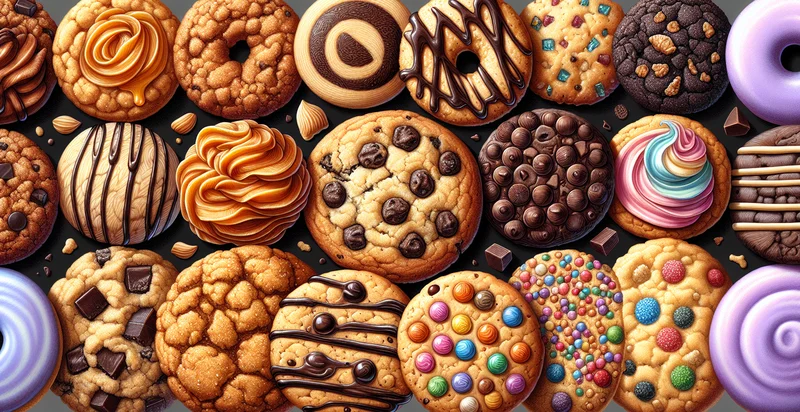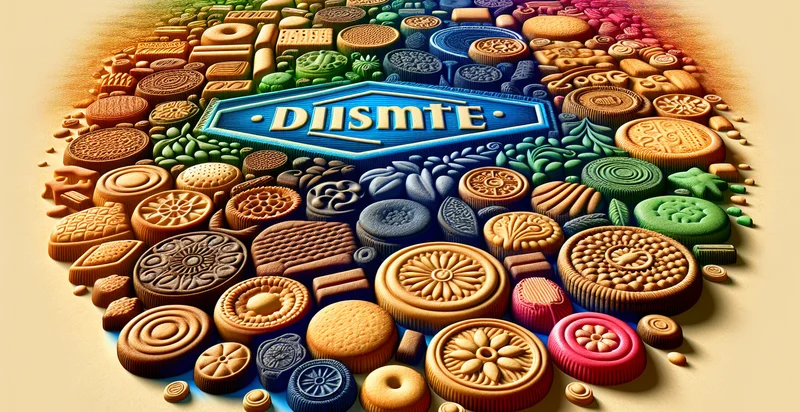Identify cookies types
using AI
Below is a free classifier to identify cookies types. Just upload your image, and our AI will predict what type of cookie it is - in just seconds.

Contact us for API access
Or, use Nyckel to build highly-accurate custom classifiers in just minutes. No PhD required.
Get started
import nyckel
credentials = nyckel.Credentials("YOUR_CLIENT_ID", "YOUR_CLIENT_SECRET")
nyckel.invoke("cookies-types", "your_image_url", credentials)
fetch('https://www.nyckel.com/v1/functions/cookies-types/invoke', {
method: 'POST',
headers: {
'Authorization': 'Bearer ' + 'YOUR_BEARER_TOKEN',
'Content-Type': 'application/json',
},
body: JSON.stringify(
{"data": "your_image_url"}
)
})
.then(response => response.json())
.then(data => console.log(data));
curl -X POST \
-H "Content-Type: application/json" \
-H "Authorization: Bearer YOUR_BEARER_TOKEN" \
-d '{"data": "your_image_url"}' \
https://www.nyckel.com/v1/functions/cookies-types/invoke
How this classifier works
To start, upload your image. Our AI tool will then predict what type of cookie it is.
This pretrained image model uses a Nyckel-created dataset and has 20 labels, including Biscotti, Butter Pecan, Chocolate Chip, Double Chocolate, Fortune Cookie, Gingersnap, Lemon, Macaroon, Molasses and Oatmeal.
We'll also show a confidence score (the higher the number, the more confident the AI model is around what type of cookie it is).
Whether you're just curious or building cookies types detection into your application, we hope our classifier proves helpful.
Related Classifiers
Need to identify cookies types at scale?
Get API or Zapier access to this classifier for free. It's perfect for:
- Cookie Quality Control: This function can be implemented in manufacturing facilities to automatically classify cookie types on the production line. By identifying whether the correct type of cookie is being produced, companies can maintain quality standards and reduce the risk of product recalls.
- Inventory Management: Retailers can use the cookie types identifier to streamline inventory management by categorizing different cookie varieties based on images. This will enable more accurate stock tracking, ensuring that popular items are restocked in a timely manner while minimizing overstock of less popular types.
- Automated Checkout Systems: Supermarkets with self-checkout systems can integrate this image classification function to identify cookies during the scanning process. This will facilitate faster checkouts for customers and reduce the need for price lookups, leading to an improved shopping experience.
- Personalized Marketing: E-commerce platforms can leverage the image classification function to analyze customer preferences based on cookie types viewed or purchased. This data can be used to create targeted marketing campaigns, recommending similar products or special offers based on individual customer behavior.
- Recipe Recommendation Engine: A cooking app can utilize this function to allow users to take pictures of cookies they encounter and receive ingredient and recipe suggestions based on the identified type. This could enhance user engagement by providing tailored content that encourages users to recreate or experiment with various cookie recipes.
- Dietary Restrictions Monitoring: Bakeries and cafes can integrate this feature into their point of sale or ordering system to ensure customers with dietary restrictions receive the correct types of cookies. By easily classifying gluten-free, nut-free, or vegan cookies, businesses can improve customer satisfaction and avoid potential allergic reactions.
- Social Media Engagement: Food bloggers and influencers can use this classification function to automate the tagging of various cookie types in their content. This will enhance user engagement by allowing their audience to easily discover different cookie recipes or brands, thereby increasing interaction and visibility on social media platforms.


